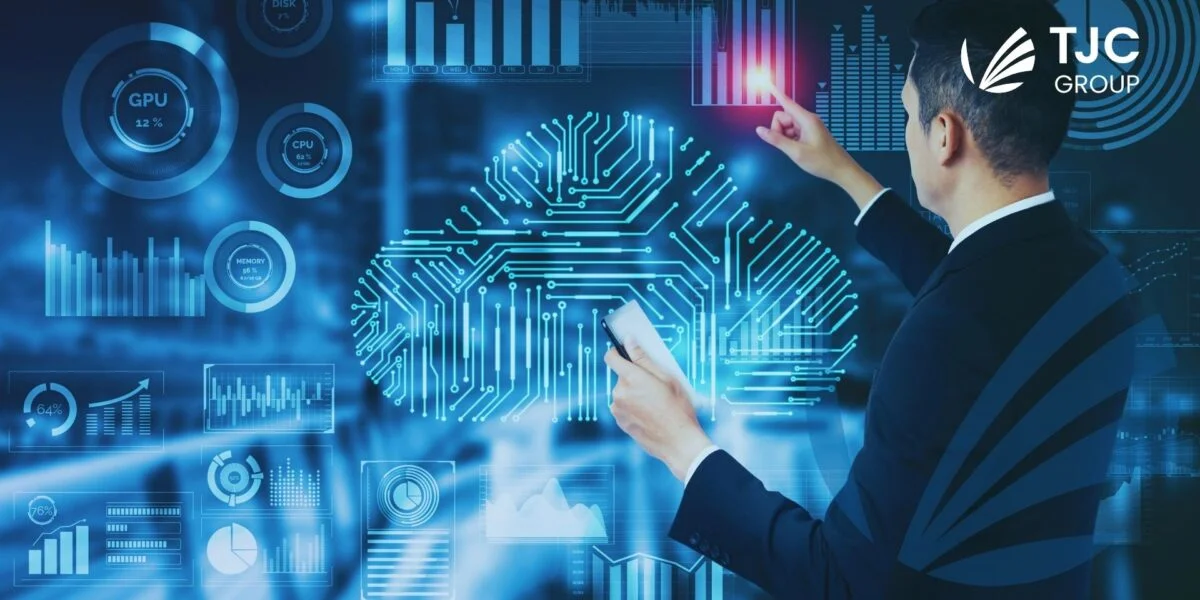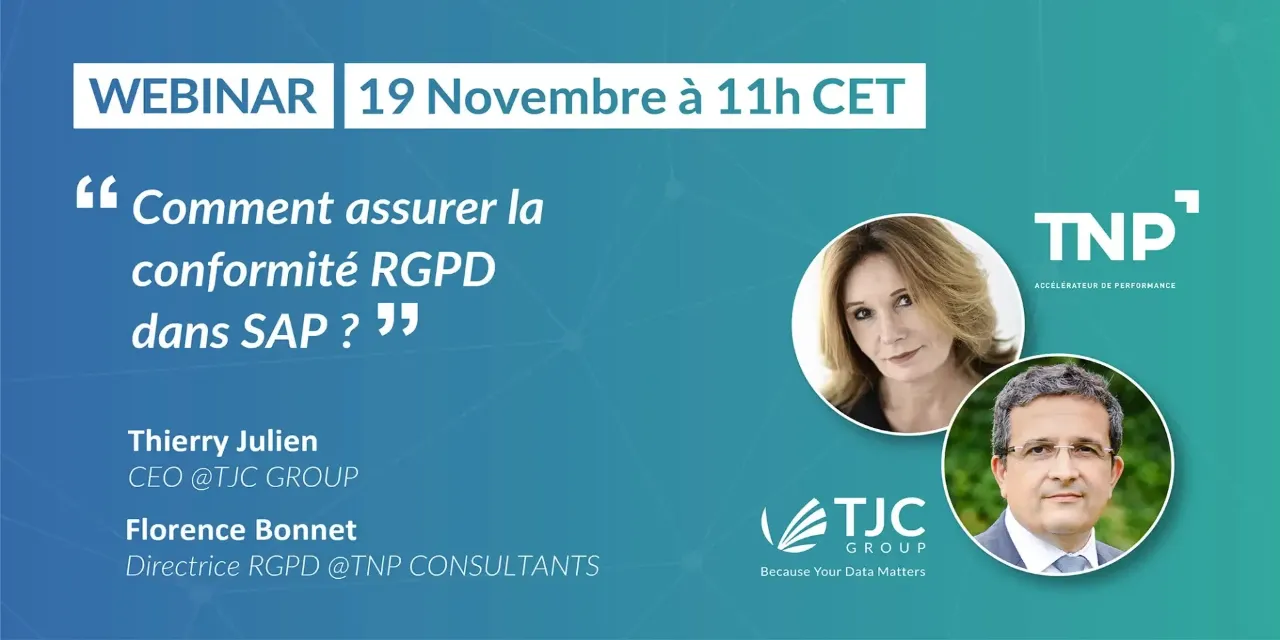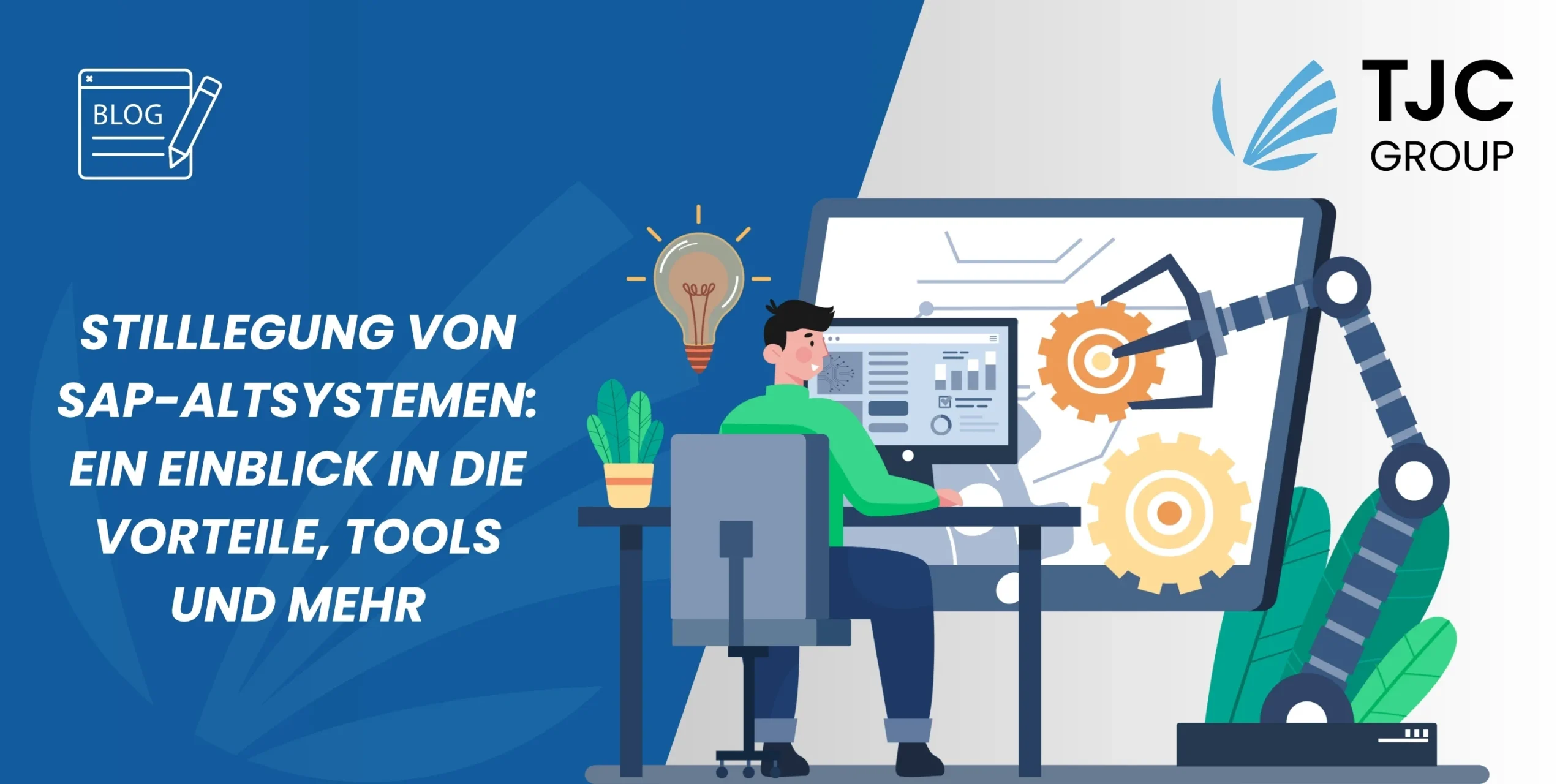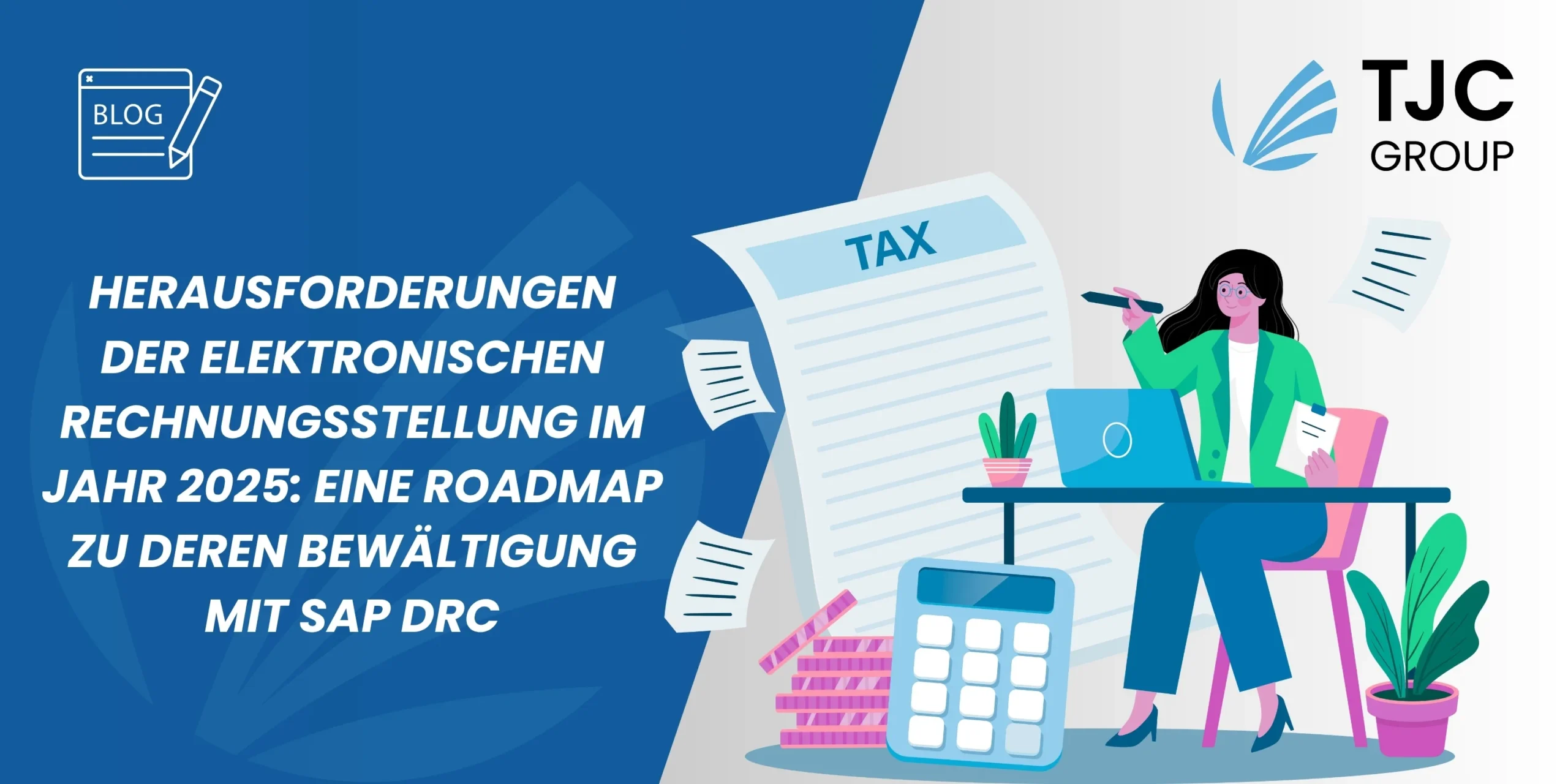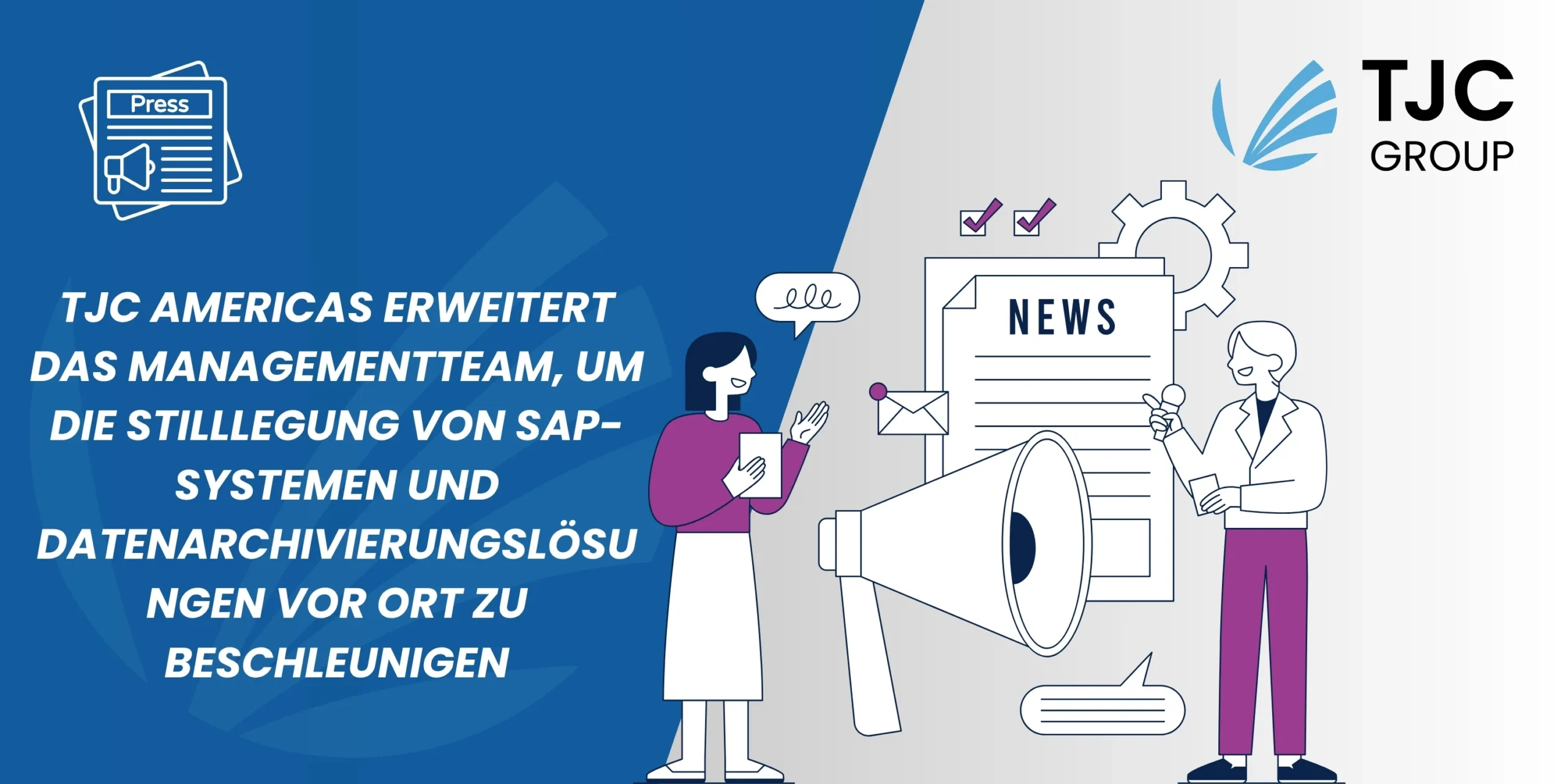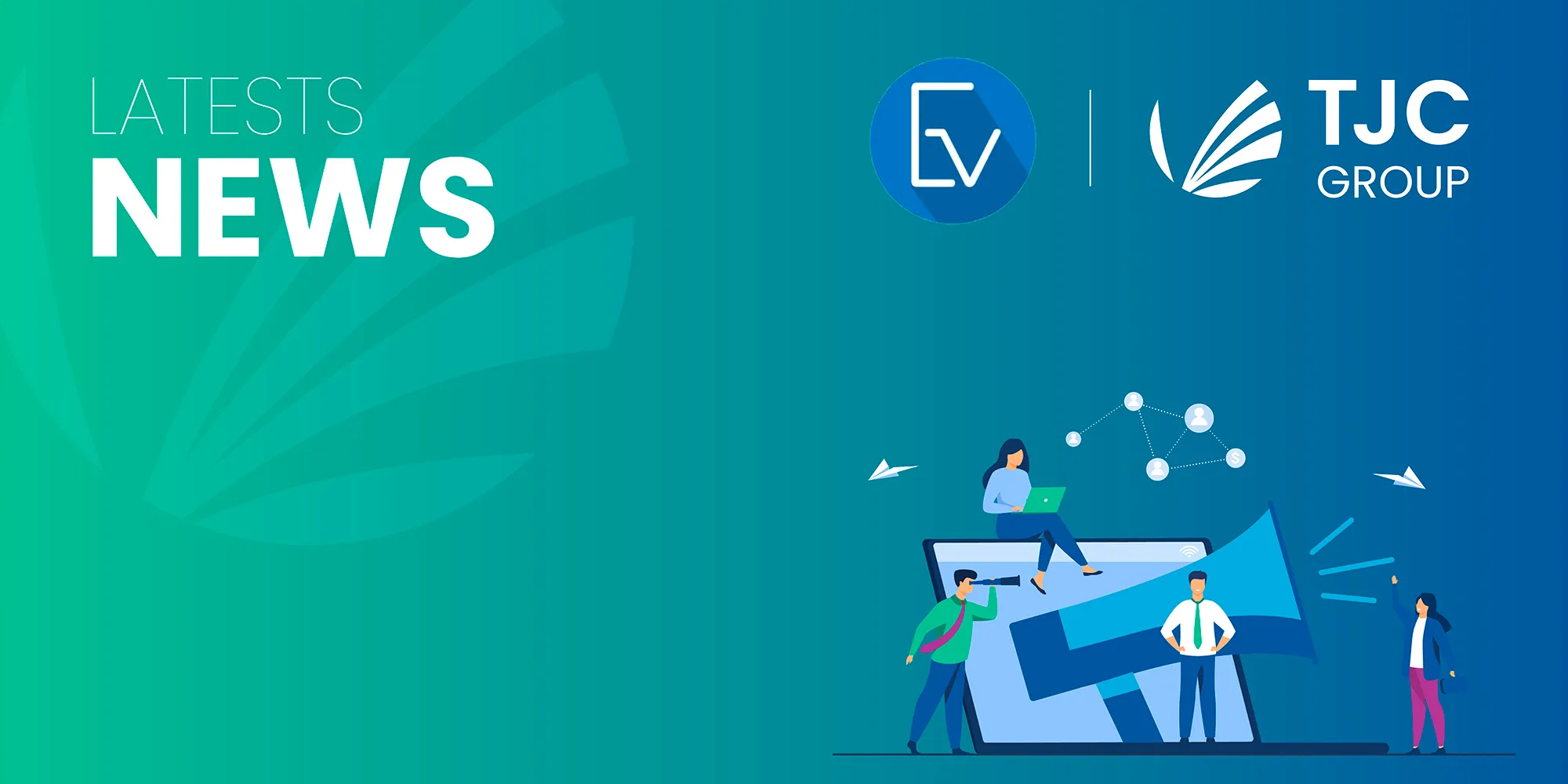Autor: Laura Parri Royo, Marketing Director, TJC Gruppe | Co-Autor: Audren Butery, Projektmanagerin & Digitale Beraterin, TJC Gruppe
Die Abhängigkeit der Unternehmen von Daten hat im letzten Jahrzehnt außerordentlich zugenommen. Die Daten in einem Unternehmen sind im Überfluss vorhanden, werden aber in verstreuten Altsystemen gespeichert, die aus geschäftlichen Gründen und zur Einhaltung von Steuer- und Datenschutzbestimmungen aufbewahrt werden. Angesichts der sich ständig verändernden digitalen Landschaft ist es jedoch unerlässlich, Ihre IT-Systeme zu aktualisieren. Außerdem ist die Aufrechterhaltung von Altsystemen kostspielig, und es bestehen Sicherheitsbedenken. Aber wie kann man eine erfolgreiche Umstellung sicherstellen? Lesen Sie diesen Blog, um mehr zu erfahren!
Inhaltsübersicht
Einführung
Es ist durchaus vermeidbar, dass ein Unternehmen über Altsysteme verfügt, die Anwendungen und Daten umfassen, die durch neue Lösungen ersetzt oder nach Unternehmensübernahmen und/oder Fusionen übernommen wurden. Und dennoch stehen IT-Teams unter dem Druck, die IT-Landschaft zu optimieren und ihre Abläufe zu rationalisieren. In diesem Zusammenhang hat sich die Stilllegung von Systemen als zentrale und effektive Strategie zur Verwaltung von Altsystemen bei gleichzeitigem Erhalt wertvoller Daten erwiesen. Unabhängig davon, ob Ihr Unternehmen SAP ERP-Systeme oder Nicht-SAP-Systeme unterstützt, sollte die Systemstilllegung Teil Ihrer Pläne sein, wenn Sie auf ein neues ERP oder eine neue Anwendung umsteigen, um einen erfolgreichen Übergang zu gewährleisten.
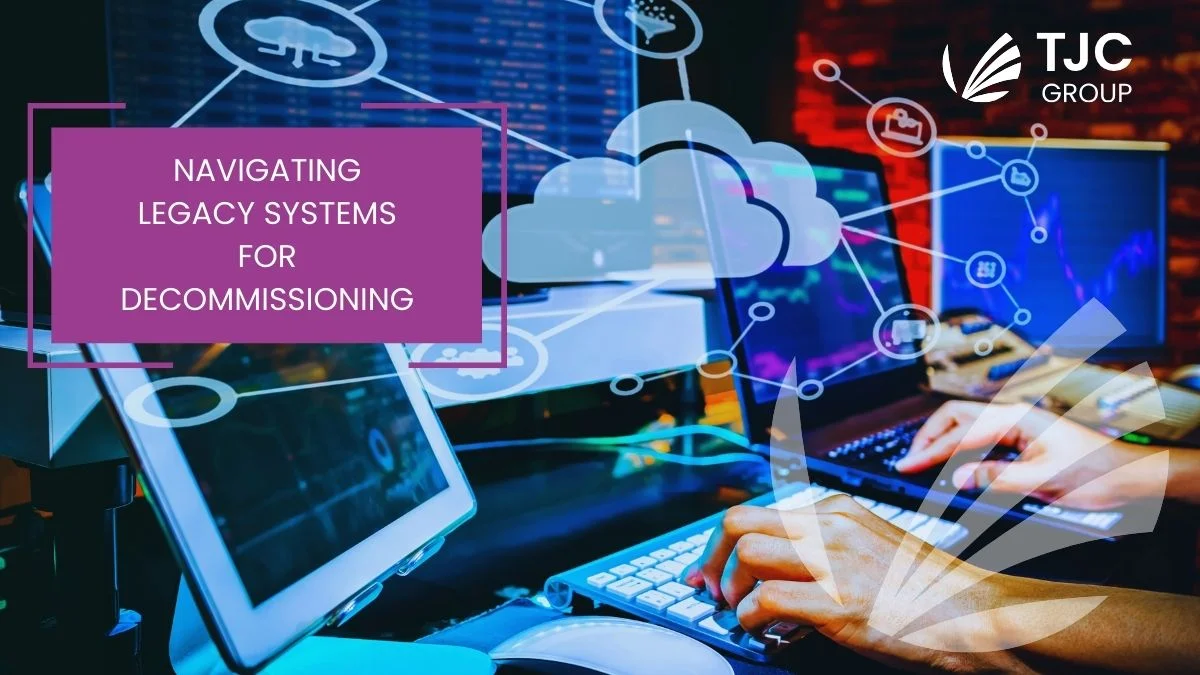
Navigieren in der Landschaft der Altsysteme
Laut Umfrageberichten bestehen durchschnittlich 31% der Technologie eines Unternehmens aus Altsystemen. Die Wartung dieser veralteten Systeme ist teuer, denn im Durchschnitt werden 60-80% der IT-Budgets dafür aufgewendet, sie am Laufen zu halten. Während diese Altsysteme einst das Rückgrat der Unternehmensabläufe waren, sind sie mit dem technologischen Fortschritt zu einem Hindernis für Effizienz und Innovation geworden. Ein Beispiel dafür ist die Einführung eines neuen Enterprise Resource Planning (ERP)-Systems, das die älteren Systeme ersetzt – wie die Umstellung von SAP ECC auf das neue SAP S/4HANA.
Alte Systeme enthalten Daten, die aus Steuer- und Prüfungsgründen oder einfach als Geschäftshistorie aufbewahrt werden müssen. Wirtschaftsprüfer könnten verlangen, den Ursprung der Altdaten, d.h. das Altsystem, zu sehen. Deshalb reicht es nicht aus, Altdaten einfach zu extrahieren und in ein neues System zu migrieren, um zu beweisen, dass diese Daten nicht verändert wurden (um sich für ein Steuerarchiv zu qualifizieren, das den Compliance-Anforderungen entspricht). Der beste Weg, um voranzukommen, besteht darin, einen Prozess zur Stilllegung des Systems einzurichten und mit einer Altsystemanwendung wie ELSA erneut auf die Altdaten zuzugreifen.
Schlüsselfaktoren für die Abkehr von Altsystemen
Oft sagen Unternehmen, dass historische Daten der Grund sind, warum sie sich nicht für die Stilllegung von Altsystemen entscheiden. Obwohl die Archivierung* die sensiblen Informationen der Altdaten bewahren kann, ist es immer die beste Lösung, sich ganz von ihnen zu trennen.
*Bei der Datenarchivierung geht es darum, Daten, auf die nie (oder nur selten) zugegriffen wird, zu entfernen und die Lesbarkeit für eine optimierte Speicherung zu opfern. Bei der Systemstilllegung geht es stattdessen darum, den Zugriff auf historische Daten für Benutzer zu bewahren, die sie benötigen, während eine alte Anwendung u.a. aus Kosten-, Sicherheits- und technischen Gründen stillgelegt wird.
Was sind also die Schlüsselfaktoren für die Abkehr von Altsystemen? Hier sind die folgenden –
Unterhaltskosten
Wie bereits erwähnt, ist die Pflege eines Altsystems eine kostspielige Angelegenheit. Aber haben Sie sich gefragt, warum? Legacy-Systeme erfordern oft umfangreiche Ressourcen für ihre Wartung, wozu nicht nur regelmäßige Software-Updates gehören, sondern auch fachkundiges Personal, das ihren Betrieb sicherstellen kann. Regelmäßige Software-Updates sind recht kostspielig und Experten für die Wartung eines veralteten Systems zu finden, kann für ein Unternehmen ebenfalls unrentabel werden. Hinzu kommt, dass der Support sowohl für die Hardware als auch für die Software irgendwann ausläuft. SAP hat unmissverständlich klargestellt, dass SAP ECC-Systeme ab 2027 nicht mehr unterstützt werden.
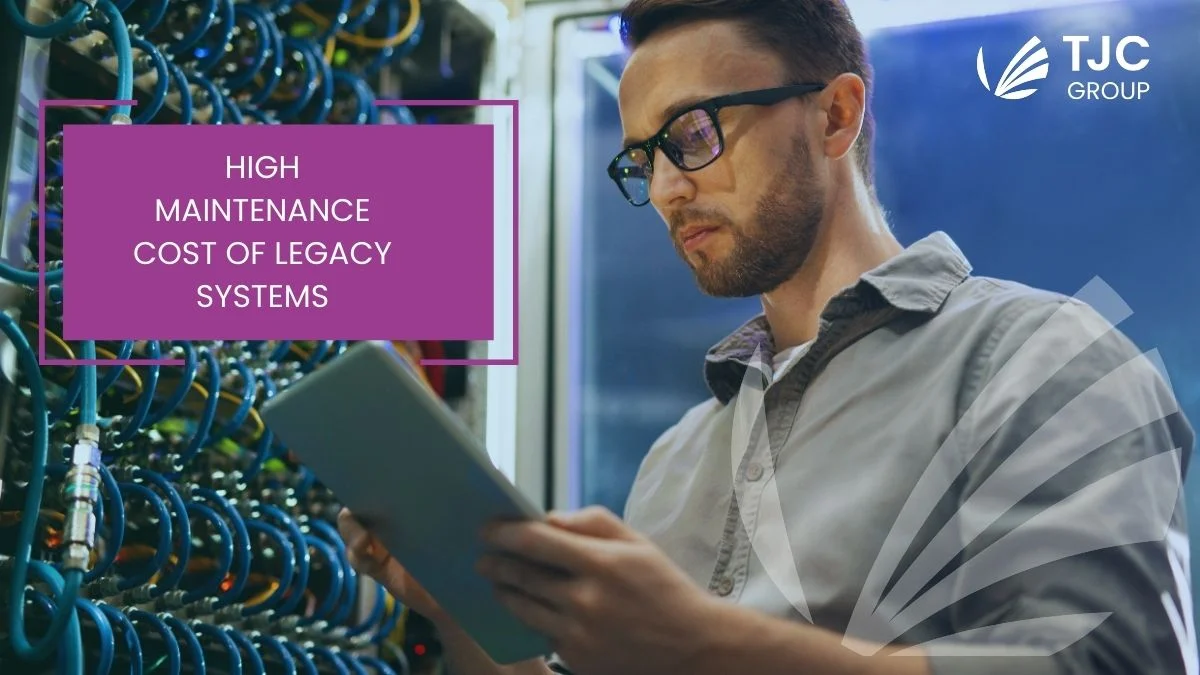
Die Unflexibilität der Systeme
Einem veralteten System fehlt die Flexibilität und Skalierbarkeit, die für die Anpassung an die sich ständig ändernden geschäftlichen und steuerlichen Anforderungen, die neuen Technologien und die sich entwickelnde IT-Landschaft erforderlich sind. Da veraltete Systeme unflexibel sind, ist ihre Integration mit modernen Anwendungen und Technologien natürlich eine Herausforderung. Der Prozess ist nicht nur sehr komplex, sondern behindert auch die geschäftliche Agilität.
Sicherheitsbedenken
Altsysteme können nicht mit modernen Technologien integriert werden, daher besteht ein hohes Risiko, dass diese Systeme angreifbar sind. Alte Systeme sind anfälliger für Cybersecurity-Bedrohungen, weil sie keine Sicherheits-Patches und Updates erhalten .
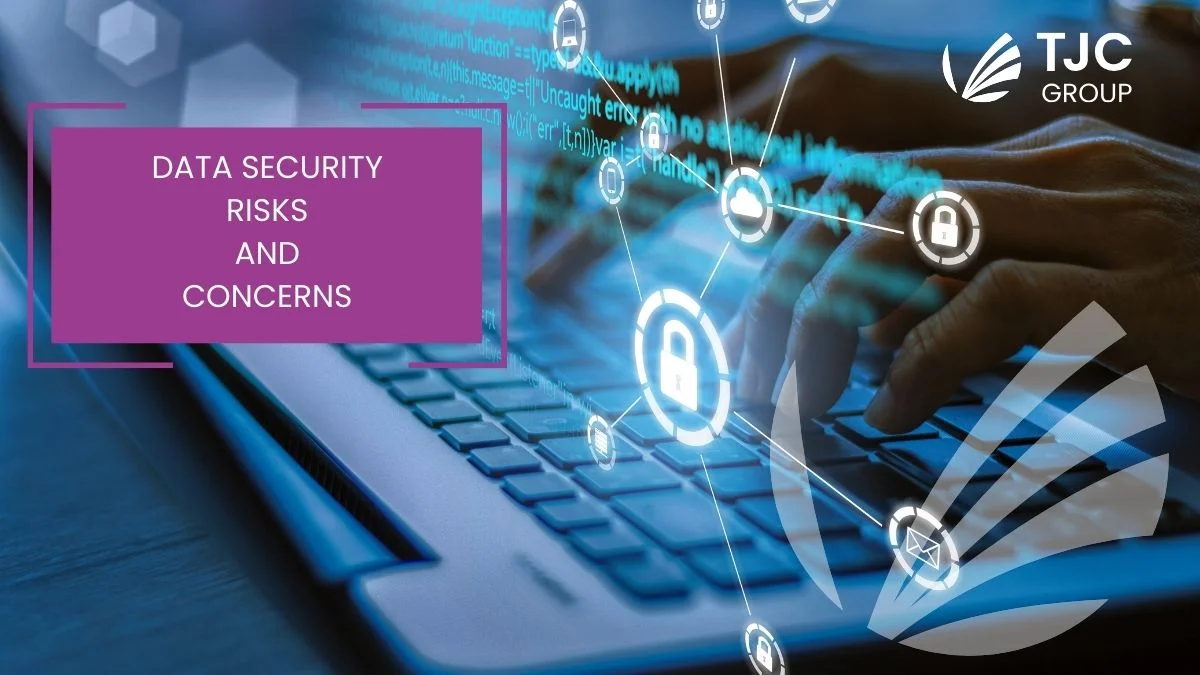
Compliance-Risiken
Bei Altsystemen ist eines der größten Probleme die Einhaltung rechtlicher und regulatorischer Standards, was zu potenziellen Compliance- und finanziellen Risiken führt. Datenschutzstandards lassen sich nur schwer auf Altsysteme anwenden, da solche Gesetze noch nicht existierten, als die Systeme entwickelt wurden. Ein Beispiel zur Veranschaulichung: Wenn ein ehemaliger Mitarbeiter seine persönlichen Daten aus dem Altsystem des Unternehmens entfernen lassen wollte, wären Sie dazu in der Lage? In den meisten Fällen verfügt das Altsystem nicht über die Werkzeuge, um Datenschutzanfragen zu verwalten. Wie können Sie das dann regeln? Es gibt Legacy-System-Anwendungen, wie z.B. ELSA von TJC, die unter anderem Funktionen für den Datenschutz enthalten, um die Einhaltung aktueller Gesetze und Vorschriften zu gewährleisten.
Erfahren Sie in diesem Webinar mehr über die Verwaltung des Datenschutzes in SAP-Systemen –
Wichtige Tipps für einen erfolgreichen und nahtlosen Übergang
Wenn Sie planen, Ihre Altsysteme außer Betrieb zu nehmen, sind hier einige Tipps, die Sie beachten sollten –
Gründliche Systemanalyse und Inventarisierung
Bevor Sie Ihre alten Systeme außer Betrieb nehmen, sollten Sie eine umfassende Analyse und Bestandsaufnahme der Altsysteme durchführen. Während dieses Prozesses identifizieren Sie alle Komponenten, Abhängigkeiten und Daten, die in diesen Systemen gespeichert sind. Auf diese Weise können Sie die Grundlage für eine gut geplante Stilllegungsstrategie schaffen.
Prüfen Sie die Genauigkeit der Extraktionen
Nach Abschluss des Extraktionsprozesses ist es wichtig, einen Prüfbericht zu erstellen, der die Vollständigkeit und Integrität der extrahierten Daten belegt. Er wird dazu beitragen, die Datengenauigkeit zwischen den Quellsystemen und den extrahierten Dateien zu bestätigen. Der Prüfbericht beweist, dass der gesamte für die Extraktion vorgesehene Datensatz tatsächlich extrahiert wurde und unverändert bleibt, um als Steuerarchiv zu gelten.
Antizipieren Sie neue Benutzeranforderungen
Die Geschäftsanwender haben möglicherweise neue Anforderungen, nachdem die Legacy-Anwendung in den Ruhestand versetzt wurde. Vergewissern Sie sich, dass Sie den Umfang der Extraktion richtig definiert haben, damit keine relevanten Daten ausgelassen werden. Versuchen Sie während der Projektumsetzung, die Anforderungen der Benutzer so weit wie möglich vorherzusehen, um zukünftige benutzerdefinierte Anforderungen (die Kodierung erfordern würden) zu begrenzen. Oft erfordern diese späten Anforderungen kundenspezifische Entwicklungen und verursachen daher zusätzliche Kosten.
Einige Legacy-Anwendungen müssen angepasst werden, um neuen Anforderungen gerecht zu werden. Dennoch haben wir ELSA so konzipiert, dass Sie bei solchen neuen Szenarien keinen Code schreiben müssen. ELSA erfordert keine benutzerdefinierte Entwicklung; neue Ansichten können ohne jeglichen Code direkt aus der Benutzeroberfläche der Anwendung generiert werden.
Der Weg nach vorn
Bei der Stilllegung von Altsystemen müssen Unternehmen mehrere geschäftliche und politische Fragen berücksichtigen –
- Welche Altsysteme müssen vorrangig stillgelegt werden, und welche können später stillgelegt werden?
- Welche Daten der Systeme, die vorrangig stillgelegt werden sollen, müssen unbedingt aufbewahrt werden?
- Welche Aufgaben müssen die Geschäftsanwender jetzt und auch nach der Stilllegung erledigen?
- Welche Berechtigungsstufen wird jeder Benutzer haben?
- Wie wird sich Ihre neue Anwendung in Ihre IT-Landschaft einfügen, und wird sie den Sicherheitsrichtlinien Ihres Unternehmens entsprechen?
Denken Sie daran, dass die Stilllegung von Altsystemen nicht nur eine technische Aufgabe ist, sondern ein strategischer Schritt zur Einführung neuer Technologien und zur Zukunftssicherung Ihrer IT-Landschaft. Unternehmen, die Arbeiten um der Schnelligkeit willen verzögern oder unterlassen, verursachen technische Schulden, die langfristig höhere Kosten und Konsequenzen nach sich ziehen.
TJC Group | Ihr zentraler Anlaufpunkt für Datenmanagement
Von Datenarchivierung bis zur Vorbereitung Ihrer Daten für die Migration und zur Außerbetriebnahme von Sowohl für SAP- als auch für Nicht-SAP-Systeme ist die TJC Group Ihr zuverlässiger Partner für alle Anforderungen an das Datenmanagement. Für die Stilllegung von Altsystemen bieten wir unsere Cloud-Anwendung an – Enterprise Legacy System Application oder ELSA.
Die Stilllegung Ihrer Altsystemlandschaft ist nicht nur aufgrund von Compliance-Aspekten notwendig, sondern kann auch eine große Kostenersparnis bei der Vorbereitung auf die Umstellung auf SAP® S/4HANA darstellen. Die Lösung basiert auf SAP Business Technology Platform (BTP) und funktioniert in der Cloud, vor Ort oder mit jedem Hyperscaler.
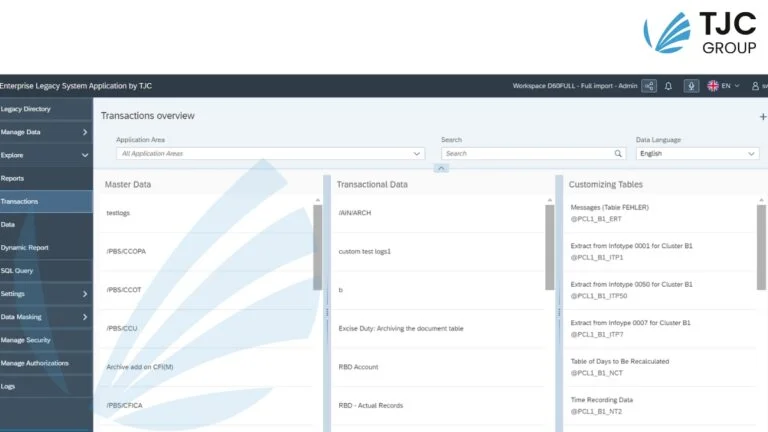
Mit ELSA können Sie sicherstellen, dass alle Altdaten sicher gespeichert werden und sowohl vor als auch nach der Migration zu den neuen ERP- oder S/4HANA-Systemen leicht wieder zugänglich sind. ELSA bietet nicht nur Zugriff auf alle extrahierten Daten, sondern macht auch die Kosten für die Beibehaltung des Altsystems überflüssig. Interessant, nicht wahr?
Wenden Sie sich noch heute an uns, wenn Sie mehr über ELSA erfahren möchten, und lösen Sie sich problemlos von Ihren Altsystemen!


